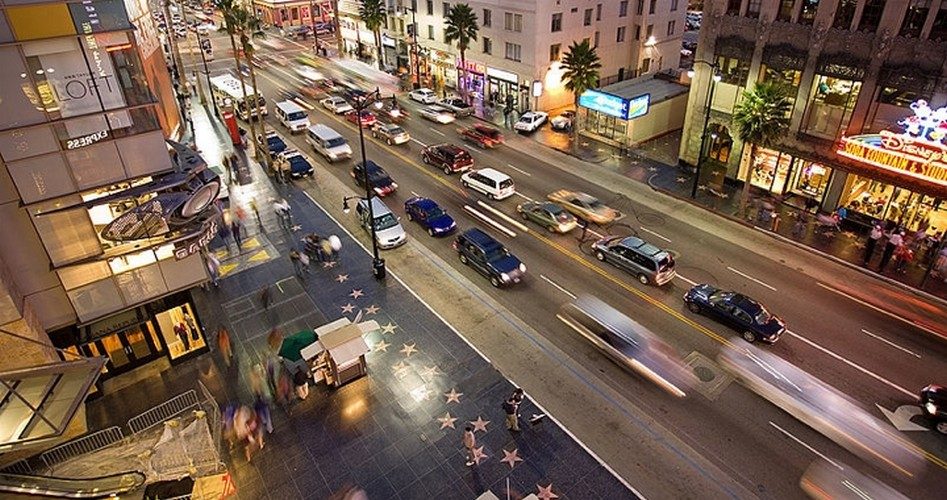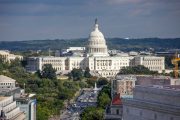
Expectations that the Los Angeles 2020 Commission’s second report would address reality and set in place strong recommendations to rescue the foundering city were dashed with its publication on April 9. In simple terms, the commission wimped out.
A year ago Los Angeles City Council President Herb Wesson asked former Clinton Secretary of Commerce Mickey Kantor to put together a group of experts familiar with Los Angeles’ problems and come up with some recommendations. In December its first report was alarming if not downright chilling:
Los Angeles is barely treading water while the rest of the world is moving forward. We risk falling further behind in adapting to the realities of the 21st century and becoming a City in decline.
Among the many problems facing the city, the most serious are those concerning its three pension plans: for fire and police, for its workers, and for those working for the Department of Water and Power (DWP). One of those plans earned 14 percent on its invested assets last year (half of what the S&P 500 Index made but twice the plan’s assumptions), and yet that plan remains a staggering $5 billion underfunded. Altogether the three retirement plans have less than 10 percent of the funds necessary to pay their benefits. Said the commission:
Los Angeles is sinking into a future in which it no longer can provide the public services to which our people’s taxes entitle them and where the promises made to public employees about a decent and secure retirement simply cannot be kept.
Part of the problem is the interest rate assumption in each of the plans. The bigger part of the problem is the failure to recognize the reality: There’s no way those plans will pay the benefits promised, regardless of interest rate assumptions.
Most Fortune 500 company pension plans assume that underlying assets will earn 4-4.5 percent a year; Los Angeles’ pension actuaries assume 7.75 percent a year. This makes the pension contributions much lower than they need to be to keep those promises — some $400 million a year lower. Those overly optimistic assumptions must be counting on fairy tales and pixie dust to make up the difference.
There was little likelihood that the commission would address Los Angeles’ problems frontally and frankly once the names of those chosen by Kantor were made public. All of them come from the “public” sector: Some are (or were) politicians, some are current union officials, and some come from public education. On the commission board were former Governor Gray Davis (who earned the sobriquet “Red” Davis from California’s Coalition for Immigration Reform), Hilda Solis (former secretary of labor under President Obama), Brian D’Arcy (head of the DWP workers’ union), and Kathay Feng (head of California Common Cause). One would have known that the commission’s recommendations would fail to address the issues directly.
The commission’s first “wake-up call” report issued in December spelled out in painful detail a city in decline. The poverty rate in LA is higher than in any other major city in the country, while unemployment is among the highest in the country. Thirty years ago LA was home to 12 Fortune 500 companies; today there are just four. It is suffocating from traffic (the commission used the word “strangled”), while much of the $7 billion it spends on educating its 640,000 children is wasted: For every 100 students entering the ninth grade, just 32 will complete the course requirements necessary to enter the University of California or California state systems.
The city’s revenues have been flat for the last five years, while its expenses are growing at five percent a year. Pension and healthcare plan costs used to take three percent of the city’s budget 10 years ago; now they account for 18 percent. The city is rightly called the “capital of the homeless” with more than 50,000 individuals living on the streets.
And then there’s traffic: The city has been consistently ranked the country’s worst for years and is one of the two primary reasons an estimated nine percent of small business owners are leaving the city. The other reason? Regulations.
For instance, when private investors wanted to put $500 million into improving the transporting of goods from Los Angeles Harbor to the Burlington Northern Santa Fe railroad, approval took an astounding eight years. A similar investment proposed by Union Pacific was tabled for the same reason: insurmountable legal, political, and environmental hurdles.
The commission quoted UCLA Professor Jerry Nickelsburg in its study:
We are seeing an evaporation of jobs that require low skills, and thus, an out-migration of immigrant populations from the City and County that could otherwise serve as an asset for the economy.
Those who have already left the City of Angels for greener pastures include Atlantic Richfield, Boeing, First Interstate Bank, Northrup Grumman, Security Pacific, and Unocal.
Hollywood is making its most popular and profitable films elsewhere, too. Ten years ago seven of the nine films that grossed $100 million or more were made in Los Angeles. In 2013, only one of the dozen that topped that mark was filmed there.
The latest report offered “a series of concrete measures” to “put the City on a path to fiscal stability and renew job creation,” but all the commission seemed to do was reshuffle a losing hand. It put forward the idea of an “Office of Transparency and Accountability.” It recommended creating an “independent oversight and rate-setting body for DWP,” and suggested changing its off-year elections to coincide with state and national elections, hoping to improve voter turnout. It also advocated adopting a “Truth in Budgeting” ordinance that would require three-year balanced budgets.
But the recommendation that the city set up another commission just to study the pension plan “problem” provided clarity: This was just another commission making recommendations to create another commission to continue to study the problem until it blows up. According to the 2020 Commission, the new “Commission for Retirement Security … would be tasked with making concrete recommendations on how to achieve equilibrium on retirement costs by 2020.”
As the New York Times expressed it, the LA 2020 Commission’s last report is noted not so much for what it recommended, but for what it didn’t: “The most contentious aspect of the report might be less in the details and more in the image is portrays of Los Angeles … a municipality in decline.”
In its initial December report the commission noted that Los Angeles has gotten itself into this untenable position due to “wishful thinking and avoidance of hard choices.” That’s exactly what the second report has engaged in: wishful thinking and kicking the can. For investment advisor Mish Shedlock, it’s already too late:
The 2020 report is sure to gather dust like all studies before and after until the inevitable happens. The inevitable is bankruptcy.
The only conceivable way LA can meet its pension obligations is to reduce them.
Given that unions will not negotiate, the only conceivable way to reduce them is [through] bankruptcy.
LA is already bankrupt. The only missing ingredient is recognition of that simple fact.
Photo of Hollywood: Photo by DAVID ILIFF. License: CC-BY-SA 3.0
A graduate of Cornell University and a former investment advisor, Bob is a regular contributor to The New American magazine and blogs frequently at www.LightFromTheRight.com, primarily on economics and politics. He can be reached at [email protected]



